The following titles have been selected for this installment of Recommended Books for Tweens and Teens.
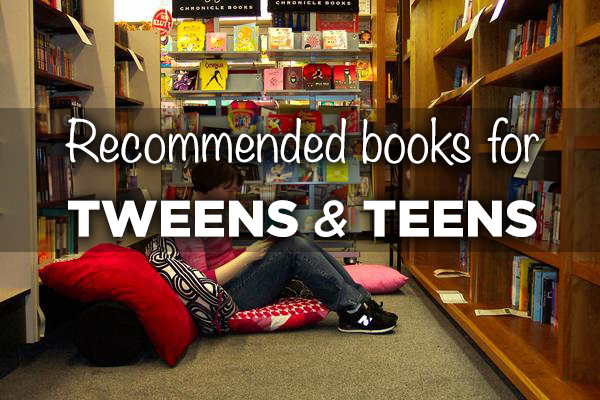
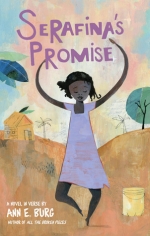
Serafina’s Promise
Ann E.
Burg
Scholastic
Press
304 pp.
Recommended for ages 10 and up
Reviewed by Beth Bayley
Serafina’s Promise is a book that is at once small and impressive, like Serafina herself. It’s a “novel in verse,” a book-length poem about a young Haitian girl and her life outside of Port-au-Prince. Serafina lives with her parents and grandmother, her days a hardscrabble routine of chores. An encounter with a Red Cross doctor has inspired Serafina to be one, too. But doctors need to go to school, and getting there is only the beginning of Serafina’s challenges. Through Serafina’s eyes, we learn of the triumphs and terrors of Haitian history, from the Haitian Revolution to the Tonton Macoutes. The details of Serafina’s life, normal to her (the long walk to get water, her mother picking bugs out of the rice, the death of her younger brother and birth of another) are presented in a sensitive but matter-of-fact way, through Serafina’s own hopeful perspective. Burg’s choice to tell the story in verse is wise and appropriate. We think of epic poems as befitting epic stories, but this is one small girl’s own odyssey right before the 2010 earthquake. Using poetry means Burg is able to tell a heavy story with lightness and beauty. The form, dotted with Creole idioms, also makes it a brisk read. Serafina’s Promise is for kids who are mature enough to handle themes of poverty and natural disasters. A sensitive reader may find herself crying as she reads, but the story is worth the tears. Older fans of poetry will also appreciate this special book.
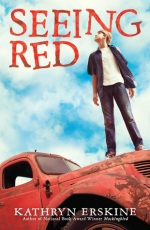
Seeing Red
Kathryn
Erskine
Scholastic
Press
352 pp.
Recommended
for ages 10 and up
Reviewed by Cynthia Unwin
Stony Gap, Virginia, 1972. This evocative rural setting is the backdrop for National Book Award winner Kathryn Erskine’s latest novel, Seeing Red. Twelve-year-old Red Porter has turned man-of-the-house when his father suddenly dies. The fate of the family store and gas station is uncertain, and Red tries desperately to dissuade his mother from selling all and moving the family to the city. In Red’s efforts to save his family business, he discovers ugly truths about his community and his own family’s past. Red confronts this bigotry head-on, sacrificing much but ultimately winning his own victory in his quest to right the wrongs he uncovers. Seeing Red validates the redemptive qualities of friendship and tolerance, highlights the importance of seeking the good in each individual, and empowers young people to embrace their convictions and stand up for the right. The pages in this lovely novel, like their setting, evoke a sense of history, and show readers how that very history can guide us toward a brighter, more just future.
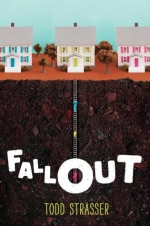
Fallout
Todd Strasser
Candlewick Press
272 pp.
Recommended
for ages 10 and up
Reviewed by Lauren Hughes
Todd Strasser’s Fallout is an alternate history novel that speculates on what would have happened if Russia had bombed the United States during the Cuban Missile Crisis. The novel begins at a breakneck pace with the main character, Scott, being awakened in the middle of the night to sirens blaring as his father rushes him into the bomb shelter. His father owns the only bomb shelter in the neighborhood, and when neighbors force their way into the shelter, it is immediately clear that there is not enough food and supplies to last the two weeks they need to wait to survive the radioactive fallout after the blast. The grim scenes that take place within the bomb shelter are broken up by flashback chapters before the attack. This novel provides a more realistic view of a post-apocalyptic setting, currently popular via young adult zombie fiction. Readers will want to discuss topics such as war, survival, friendship, and responsibility. Fans of Susan Beth Pfeffer’s Life as We Knew It series will devour this book with its similar pace and themes. While Strasser probably intended this book for the middle grade set, there are some references to sex and alcohol.
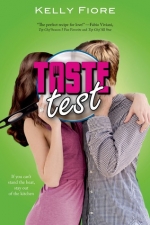
Taste Test
Kelly Fiore
Walker Children’s
352 pp.
Recommended
for ages 12 and up
Reviewed by Mari Clark
Maryland author Kelly Fiore mixes together romance and intrigue to whip up a light, fluffy read in her debut novel Taste Test. Peppering the narrative with notes, transcripts, emails and contestant interviews, Fiore tells the story of Nora Henderson, an aspiring chef raised by a single father in barbecue-soaked North Carolina. Chosen as a contestant on “Taste Test,” a reality-television competition, feisty Nora is determined to win the top prize of $50,000 and a scholarship to a prestigious French culinary academy. Standing in her way is a group of talented teenage contestants. Nora’s toughest competitor turns out to be Christian Van Lorton, the privileged, bad-boy son of a famous chef, and inevitably, sparks fly between the two both on and off camera. Added to the mix is a touch of mystery: Does a condescending, glamour-girl competitor have an improper relationship with a judge? Is someone deliberately trying to sabotage the show? Unfortunately, at times character development is overshadowed by the intrigue. And a love triangle among Nora, Christian and Billy, Nora’s best friend back home, feels contrived. Nonetheless, the story zips along at a quick pace. Whether you’re a fan of cooking competitions like “Top Chef” or not, the vivid descriptions of recipes and ingredients will — like the story itself — prove to be a treat.
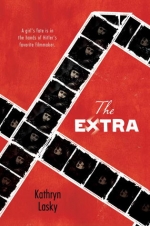
The Extra
Kathryn Lasky
Candlewick Press
314 pp.
Recommended
for ages 12 and up
Reviewed by Corinne Wetzel
Even in Hitler’s Germany, audiences were captivated by the silver screen. Starstruck Adolf Hitler backed glamorous Leni Riefenstahl with power and money to fuel her acting and filmmaking career. Riefenstahl, driven and ruthless, used Gypsies from concentration camps as slave labor “extras” in her films.Kathryn Lasky places heroine Lilo Friwald in this surreal borderland between movie make-believe and real-life horror. In 1940, 15-year-old Lilo and her parents are plucked from their comfortable lives in Vienna and placed in a concentration camp, destined for slave labor or the death camps. The Friwalds are Gypsies, a diverse group of people who, like the Jews, don’t meet the contrived Nazi ideals of racial purity. Lilo and her mother are selected to be extras in Riefenstahl’s latest film. Lilo’s childhood admiration of the actress turns to fear as she sees how casually “Aunt Leni,” as Riefenstahl demands they call her, sends to death those who have displeased her or are no longer useful. With resourceful Django, a teenage boy whom she befriends, Lilo strategizes to protect her mother and herself. When a horseback-riding stand-in is needed, Lilo steps forward, raising the stakes by attracting Riefenstahl’s wolf-like attention. Despite her horrific surroundings, Lilo finds ways to exert her will and to explore her own maturing feelings and values. Happy endings are few in Holocaust fiction, but Lasky adeptly reveals hope in this story based (sometimes loosely) on true people and events. The stories of Nazi filmmaking and of the atrocities against European Gypsies will be new to many YA readers. Sensitive or younger readers may not be ready for graphic details of Nazi medical experimentation or murder. All readers will appreciate perspectives on national racism and the meaning of family.
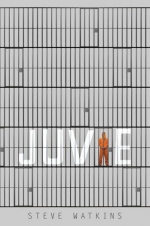
Juvie
Steve
Watkins
Candlewick
Press
311 pp.
Recommended
for ages 12 and up
Reviewed by Terry Lim Diefenbach
How far would you go to help preserve family unity if it looks like you may have to give up your future and your good name? To keep her sister Carla from going to jail and her niece out of foster care, Sadie is going all out; she takes the blame when the two sisters, in the wrong place at the wrong time, are accused of a drug deal. Though everyone expects her to get off with a stiff warning, Sadie winds up doing 6 months in juvenile hall. Now, finishing high school on time and getting a basketball scholarship may be outside her reach. Worse, juvenile hall not only severely curtails physical freedom and contact with family and friends, it wreaks havoc with Sadie’s sense of fairness. In the harsh, rigid, yet unpredictable environment, Sadie endures bullying by guards and fellow inmates. She has to redefine her values; trust is negotiable and everyone functions behind a screen of her own making. Readers — especially girls — 12 and up will root for Sadie. Her stepping in for a sister may remind some of Katniss of The Hunger Games, but unlike that setting, Sadie’s dystopia is real, here and now. Juvie is a tense but compelling read, and hard to put down. Pulled into Sadie’s anger, doubts and strengths, we hope that whatever is forced on her and her family will serve her well when she returns to the outside world.
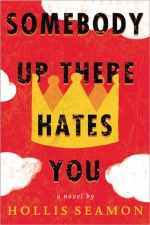
Somebody Up There Hates You
Hollis
Seamon
Algonquin
Young Readers
237 pp.
Recommended
for ages 15 and up
Reviewed by Lisa Smilan
Richard Casey is a 17-year-old in love and in lust with his 15-year-old neighbor, Sylvia. They live in Hudson, New York, and each teen has dreams, ambitions and fantasies. What separates Richard and Sylvia from other teens is that both are terminal cancer patients, both residents of the community hospital’s hospice floor. With a wonderful sense of humor, Richard describes their shared diagnosis as “SUTHY” (Somebody Up There Hates You) disease. Despite his frail, ailing state, Richard grasps the thin strand of life he still has. He’s going to make the most of his remaining days, even if his teeth are loosening, his legs can barely hold him up, his eyes are failing. At times, Richard and his story are raunchy as he proudly embraces every bit of coming-of-age he can manage. Many of the adults in the story see that Richard and Sylvia live in an alternate reality, where rules that might apply to most teens have little purpose in the short remainder of their lives. Sylvia’s father is not one of these adults: unhinged and enraged by the unfair cards his daughter’s been dealt, he clings to the child Sylvia once was, doing all he can to keep the teens apart. Somebody Up There Hates You contains sexuality, violence, and teen alcohol and drug use, and is probably inappropriate for younger teens. Still, it is a valuable story of love, friendship, and determination that will make readers consider all that we take for granted.
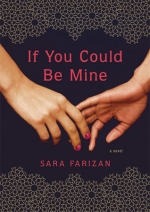
If You Could Be Mine
Sara Farizan
Algonquin
Young Readers
256 pp.
Recommended for ages 16 and up
Reviewed by Mary McCusker Goodie
Sara Farizan’s debut novel, If You Could Be Mine, contains the elements a reader expects from a good romance: love, longing, and heartache. What makes Farizan’s novel unique, however, is the palpable weight of the setting and the honest narrative of her tormented hero, Sahar. Set in the heart of Tehran, the novel highlights the clash between individual and cultural desires. At the age of 6, Sahar falls in love with her best friend, Nasrin. The girls grow up together, masking their mutual attraction behind the label of “best friends.” As they mature, so does their love for one another. When Nasrin’s parents select a husband for her, Sahar is devastated. Desperate to hold onto her relationship with Nasrin, and frustrated that she cannot be honest about her feelings, she explores the one option in Iran that would make it legal for her to marry the woman she loves. If Sahar can prove that her own female gender was a mistake, she can have a legal sex change operation. Farizan weaves fascinating details of Iranian life with heart wrenching longing. As readers root for Sahar to be true to herself amidst all of the potentially devastating ramifications of her relationship with Nasrin, it becomes clear that it is Nasrin who holds the key to the girls’ future as a couple. Mature young adult women, particularly those struggling to stay true to their sexual identities despite the outside expectations placed upon them, will enjoy Farizan’s praiseworthy work.
Beth Bayley is a librarian, archivist, and writer in Washington, D.C.
Mari Clark has a master’s degree in museum education, has worked for a variety of non-profits and museums, and wrote a monthly column for “Dance Magazine.” She currently works as an independent contractor for the U.S. State Department.
Terry Lim Diefenbach is an artist and writer. She lives in California, and is currently illustrating for two educational publishers.
Mary McCusker Goodie is a writer, editor and teacher. She lives in Montgomery County, Md. with her husband and three sons.
Lauren Hughes is a middle school teacher for Howard County Public School System and is nearing the completion of a Masters degree in Children’s Literature from Hollins University in Roanoke, Va.
Lisa Smilan writes novels for both the Young Adult and general fiction markets. An associate editor for The Washington Independent Review of Books, she selects the books and coordinates reviews for the “Recommended Books for Tweens-Teens” feature.
Cynthia Unwin, Ph.D., is a reading specialist and worked for many years in the Fairfax County Public School system. She writes fiction for children and young adults.
Corinne Wetzel teaches English to 120 awesome 7th graders in Chantilly, Va. She is an avid reader of young adult fiction.
_80_47.png)
